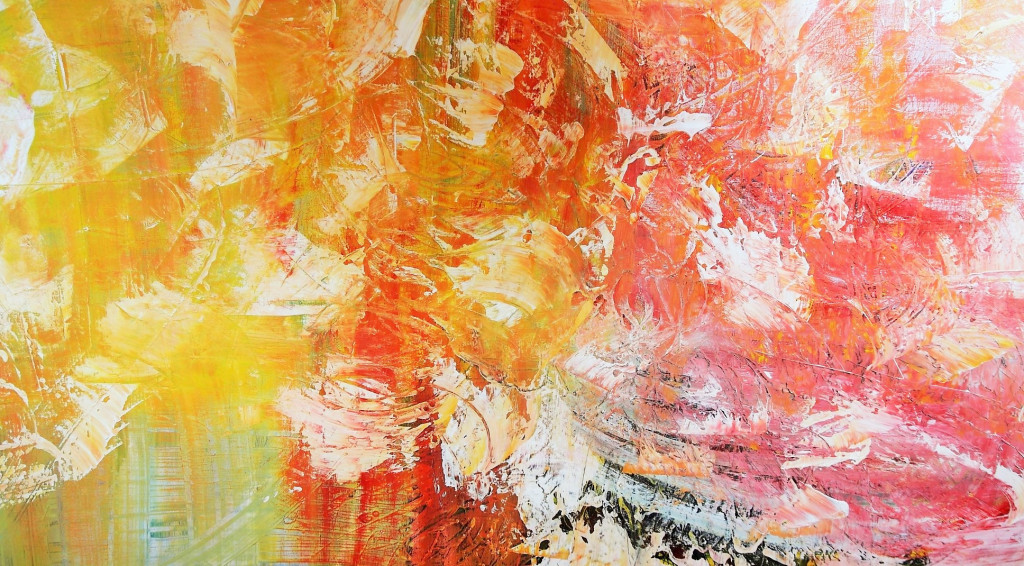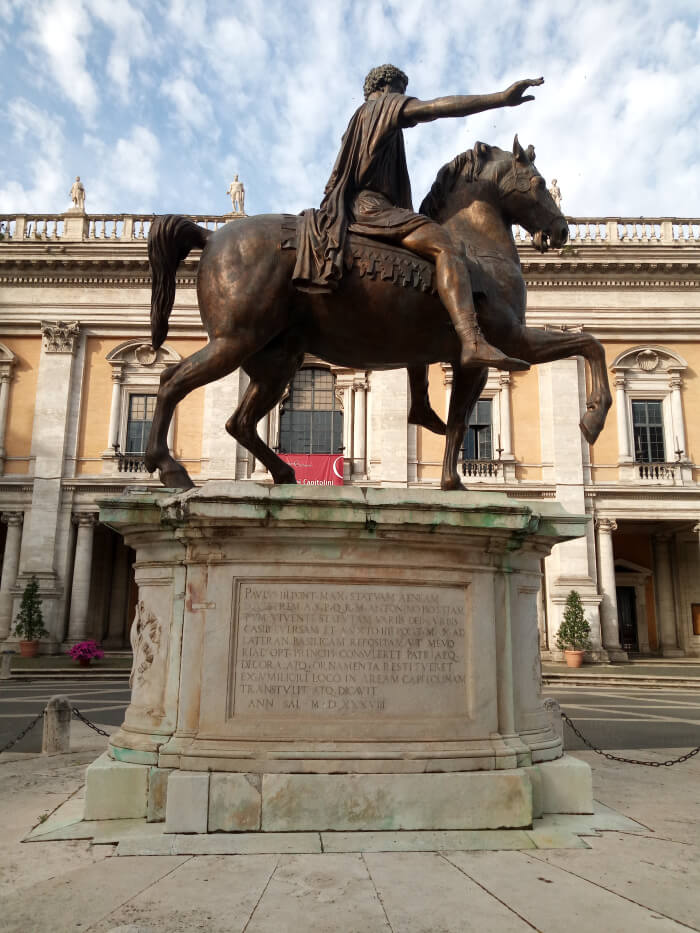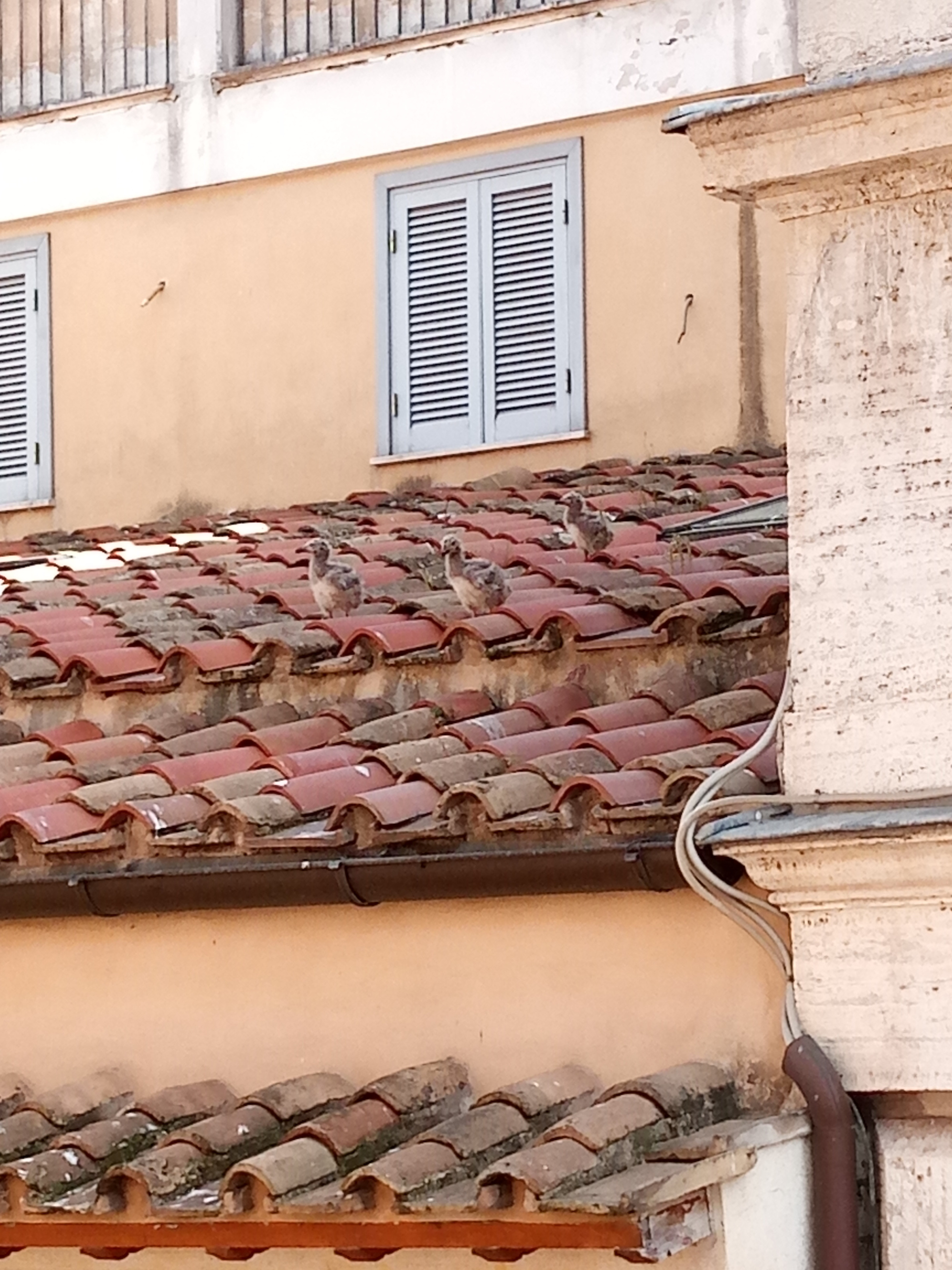
In the morning I wake up like this, with this beautiful painting of Vincenzo in front of my eyes. The title is “It was Summer”, like a Jacques Prevert’s poem. I look at it and for a few seconds I don’t remember the virus outside. This clash of warm colours gives me the idea of the birth of the day, Apollo’s chariot, the night overwhelmed by the lights of dawn, the propitious moment, “kairòs” as the ancient Greeks would have called it, very different from “krònos” which is just the moment when the alarm clock sounds, the ordinary time. Opening my eyes to this painting makes me want to get dressed and go out. That is precisely why it is the first thing I want to see when I wake up.
But after such a long quarantine, leaving the house for these first walks gives me the same feeling of bewilderment that the three baby seagulls walking on the roof opposite my windows for about a week must have felt when they came out of their egg. There’s a bit of uncertainty in my legs. For sixty days, the world has had the net borders of my home and the longest trip was to cross the street to go grocery shopping.
Once in the street I feel uncomfortable and it horrifies me, understanding that I’ve got used to this confinement. Walking through the alleys of downtown, I meet very few people. It reminds me of some solitary summers spent in the city when I was a child. The shops closed in August for the holidays. Even then I didn’t like being alone in a silent, warm and blinding city! I’ll have to remember that when I walk through these narrow streets crowded with tourists again! I notice that we are all very careful to keep our physical distance but we also look at each other much longer in the eyes. Before quarantine, it would have been rude to stare for so many seconds at a person passing in the street. After all, with the mask, it is very difficult to recognize the face or imagine it. Maybe we all missed people around us even though we don’t know each other.
I keep walking on Via del Corso while my right hip starts to hurt a bit. I’m completely out of practice. But on the other hand it is such a pleasure to do this simple step-by-step movement again! I think after quarantine proxemics will be the great issue and won’t depend on a country’s culture anymore. It will be essential for the Romans to change some habits such as touching our companion while we are talking. This kind of physical contact is the norm here. We’ve known a person for 5 minutes and we’ve certainly given him already a pat or two on the back or touched his arm. Before starting a tour, I explain to my guests that this typical Italian attitude intensifies as we go down to the south of the peninsula. I am also typically Italian from this point of view. I think it is important to be aware of it otherwise the different idea of proxemics, the measurement of interpersonal distances, could create misunderstandings, especially to those who come to Italy for the first time.
Passing under the Campidoglio, I strongly hope to have difficulty getting used to this space of at least one meter between me and others because social distance does not represent me. I also find it a contradiction in terms because we are social beings. I do not want to look at the others to measure the distance in order to avoid them better but to meet them and get to know them!
Finally – with a little breathlessness – I climb up the hill from the staircase designed by Michelangelo who five centuries ago turned the orientation of the Capitoline Hill definitively towards the Vatican and since then it has given its back to the Roman Forum. I am very excited to be here again. My legs have gone by themselves. On this hill there are the City of Rome and the Capitoline Museums, the first museum in the world opened to the public and my official serotonin supplier. In the centre of the square, the statue of Emperor Marcus Aurelius on horseback, with his right hand raised in the gesture of the Adlocutio, the typical gesture with which the emperors invited the crowd to silence before speaking (no microphone in their age!). And when finally I look at the statue, I realize that I could notice many other things, such as the particular horse gait, the meaning of the sheets used as a saddle, the Michelangelo’s drawing of the floor of the square, realized only in 1940 by Mussolini. And instead, even though the square is almost deserted, now that Marcus Aurelius and I are facing each other again, he not even look at me. He looks beyond. And I do the same! I’m not really focused on him. Seeing his outstretched arm, I just think how to get used to the new rules of proxemics in Italy: please, at least one meter away madam, at least one meter.
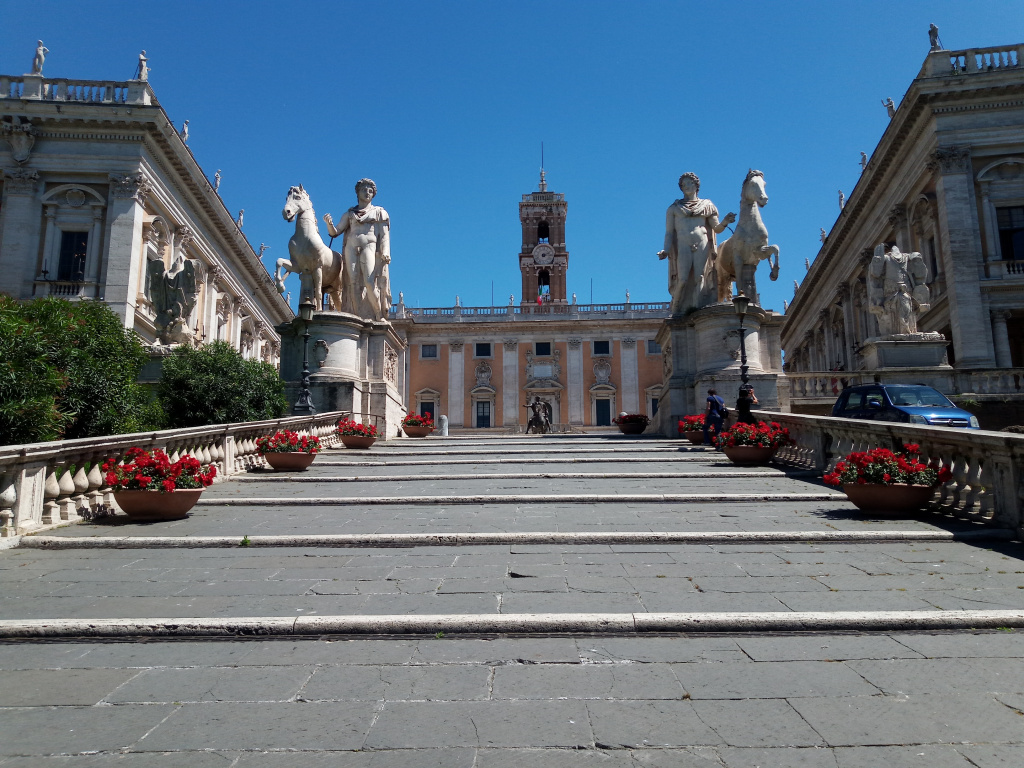
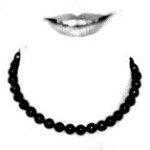
Federica
